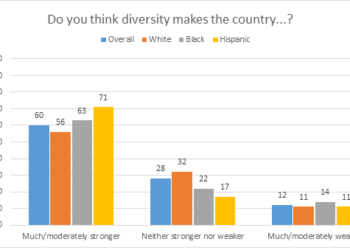As businesses rise to meet the challenge of securing their premises, they’re straddling a razor-thin divide that separates robust protection and personal privacy rights.
It’s not simply about installing the latest camera system or biometric scanner; it’s a face-off with legality and ethics, requiring a nuanced approach, and a good legal team.
To tackle this topic with due care, let’s get down to brass tacks regarding how entrepreneurs can leverage cutting-edge security without trampling on consumer trust or violating intricate consumer protection laws.
Why Upgrading Access and Oversight is Wise
In the quest for solidified security, business owners are increasingly turning to sophisticated equipment. Innovations like automatic gate openers and comprehensive parking systems are examples of tools designed to limit access to authorized persons only while managing vehicular traffic effectively. These are both deterrents and also facilitators, streamlining entry and exit for a smoother operation.
When sourcing these advanced mechanisms, the latest tech in this space is available from suppliers like All Security Equipment. Such vendors are often ahead of the curve, offering solutions that blend seamlessly with your existing infrastructure.
The key here is strategic implementation; one that maintains an open dialogue with customer expectations of privacy and personal freedom within a public or semi-public space. Taking this on in a sensitive and transparent way means installing equipment that protects both assets and the autonomy of those it serves, providing protection without fostering a feeling of confinement.
Wrangling Surveillance and Consent
According to Grand View Research, the smart security market is set to grow by 13.1% annually to the end of the decade, and is already worth over $57 billion. So there’s clearly a strong desire to adopt it across the board.
Conversely, Cisco’s latest Consumer Privacy Survey found that data privacy policies are being taken more and more seriously by average people, with 28% taking advantage of their rights in this regard. Businesses risk losing customers if they aren’t honest about how data is used, and consent is a critical factor in this context.
Basically, businesses must ensure that any form of surveillance, such as CCTV within commercial spaces, is deployed with informed consent. Implementing these systems involves cultivating an environment where patrons are aware they’re being monitored for their safety—and that their rights are intact.
Clear signage, explicit policies detailing the use and extent of surveillance, and opt-in choices for areas with enhanced monitoring can aid in aligning with consumer protection laws. It’s a symbiotic relationship: protecting premises while honoring consumer expectations about privacy. So just as call tracking in a sales context has to be handled unambiguously, this same approach must apply to physical security.
Staying Ahead of Statute Shifts
As we thread the needle between security and privacy, each legislative session throws up fresh obstacles. Consumer protection statutes are not static; they evolve as swiftly as the technology they regulate. Savvy businesses stay ahead by keeping their ear to the ground—vigilantly monitoring for any shake-ups in legal requirements that could affect their security measures.
Staying informed is no mere suggestion but a business imperative, as ignorance can lead to costly violations. Whether it’s GDPR for European customers or CCPA in California, each jurisdiction can have vastly different demands, and compliance is non-negotiable, whether you operate a retail outlet or a tech startup.
It’s wise to consider regular audits with legal experts specializing in consumer rights to ensure that your security enhancements don’t inadvertently edge into murky legal waters. And since the FTC is getting bolder about slapping penalties on companies that slip up in this regard, it’s not just about reputational protection, but financial sustainability.
Final Thoughts
It’s true that making a business more secure while still staying on the right side of consumer protection laws isn’t always a walk in the park. But the alternative is much worse – one which could leave you lacking customer trust and with a big fine to pay. So deal with this issue diligently, and the outcome will please all parties.










